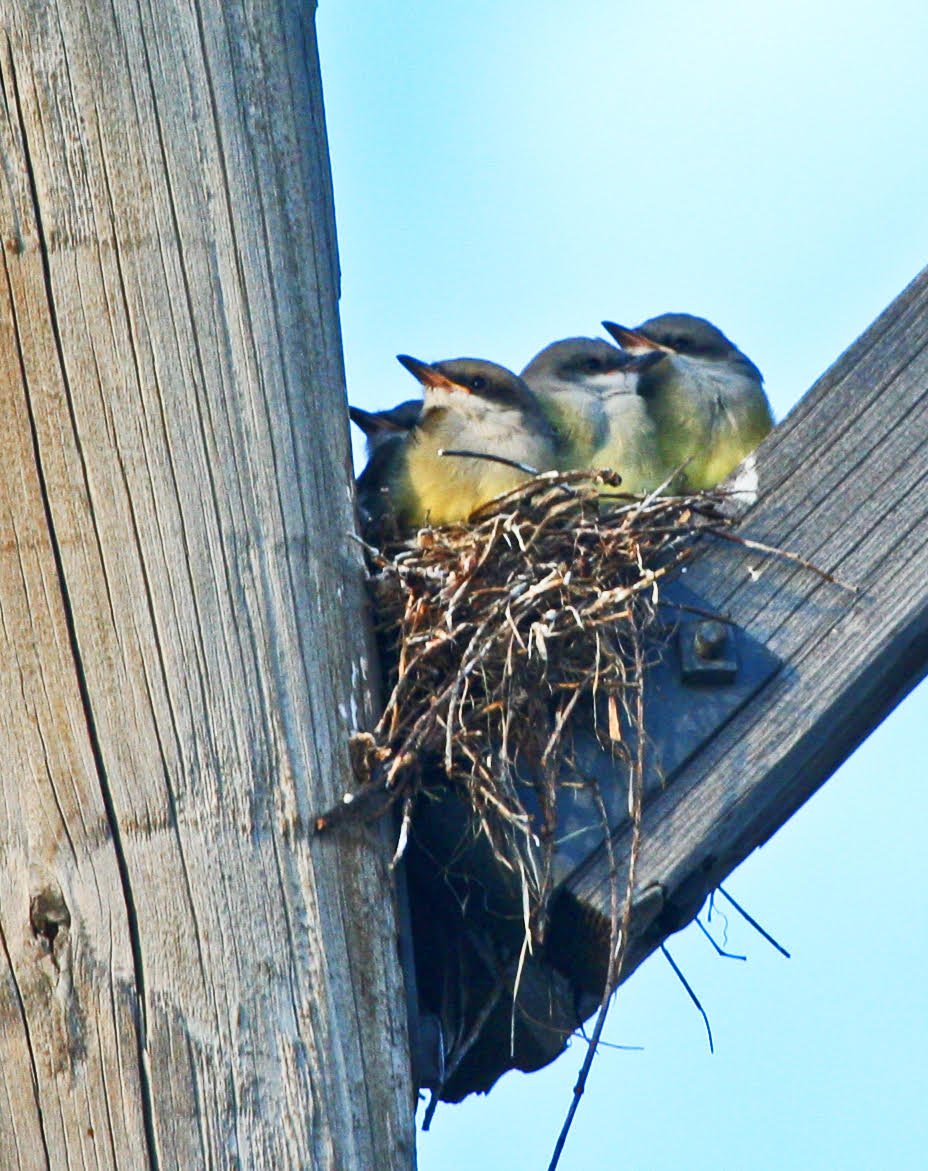May Nature Almanac: Tyrannical Western Kingbirds Rule!
By Ruth Carol Cushman, Stephen R. Jones, and Scott Severs
May 2022
A sound like a tape cassette played fast-backwards erupts above you. (That is, if you’re old enough to remember tape cassettes, that’s what it sounds like.) A gray bird with a lemon-yellow belly and lots of attitude flies out from a perch and chases off an intruder. If really annoyed, the bird may erect seldom-seen reddish crown feathers normally covered by the gray plumage. This vocal defender of territory is a Western Kingbird (Tyrannus verticalis) newly arrived in Colorado from winter quarters in Mexico and Central America.
Like other members of the flycatcher family, Western Kingbirds are easy to spot. They generally choose conspicuous perches such as fence posts, utility lines, and tree snags near open fields where they sit upright watching for bugs. After zooming out after a target, they often return to the same perch. Their typical menu includes wasps, crickets, beetles, butterflies, moths, and spiders. They also feed on bees; stomach examinations reveal that it’s mostly the drones they consume so beekeepers need not worry.
Western Kingbird with an afternoon snack. Photo by Scott Severs.
Surveyors for the Second Colorado Breeding Bird Atlas, recorded nesting activities starting in late April and continuing through late July. Although we think of Western Kingbirds as a bird of the grasslands, the Atlas notes that it’s a ubiquitous species thriving in a variety of habitats including desert shrublands, riparian woodlands, and rural shelterbelts usually below 7,000 feet.
For many years, a pair of Western Kingbirds returned to nest in the crotch of a telephone pole near our home in eastern Boulder County. They usually raised 4 or 5 chicks. We put out cotton for their nests, and both Western and Eastern Kingbirds absconded with it. The parents, habituated to humans, scolded when we walked by, but treated us much more kindly than they do the resident blackbirds and hawks. Belligerent kingbirds harass much bigger birds, often chasing them and mercilessly pecking them on the back and tail.
Western Kingbird nest with chicks. Photo by Glenn Cushman.
Their courtship is also frenetic. In his life history series, Arthur Cleveland Bent quotes E.S. Cameron’s 1907 description: “the male indulges in a curious display…. He makes successive darts in the air, fluttering, vibrating his quills, and trilling as he shoots forward. Propelling himself thus for several hundred yards, he looks like a bird gone mad.”
When Bent wrote his accounts, “Arkansas kingbird” was the official name of this widespread flycatcher. The name was later changed to “Western Kingbird” to acknowledge the broad extent of its range. According to Cornell Lab of Ornithology’s All About Birds website, the breeding population in the U.S., Canada, and Mexico has been expanding chiefly due to human activities and now totals an estimated 22 million birds. Poles and other human-built structures serve as perches and nesting sites, and cleared forests create open foraging sites.
Look for them in farmlands and along roads in the eastern part of Boulder County where there is a mix of woodlands and fields. The East Boulder Trail from South Teller Farm to Gunbarrel Hill is an especially good place to see them. Our favorite place to enjoy their cacophonous concert is Crow Valley Campground in the Pawnee National Grassland, where they often begin chattering before sunrise and continue throughout the day during the month of May.
Two young Western Kingbirds with the yellow gape at the corners of the bill still visible. Photo by Scott Severs.
Other May Nature Events
Wild plums bloom in the foothills attracting Julia orangetips, red admirals, painted ladies, and other butterflies. Sugarbowls, chiming bells, wild iris, larkspur, pink ball cacti …a new flower seems to open every day.
Miller moths pass through in large numbers on their way to breed in the mountains, and tent caterpillars emerge from cobwebby tents.
Abert’s squirrels engage in mating bouts with up to seven males pursuing a female through the ponderosa pines.
Colorado chipmunks, striped skunks, and white-tailed deer are born.
Dim the Lights for Birds at Night is the 2022 theme for World Migratory Bird Day on May 14. Light pollution confuses and disorients night-flying migrants, often causing them to crash into buildings. Many bird lives can be saved by simply turning off your exterior lights at night during spring and fall migration season.



